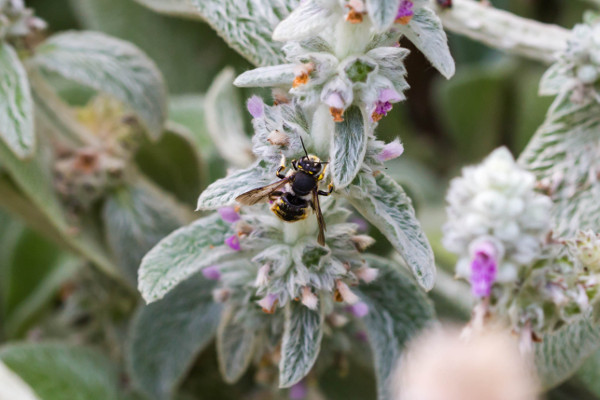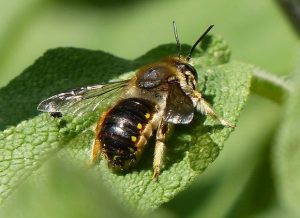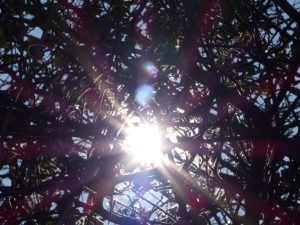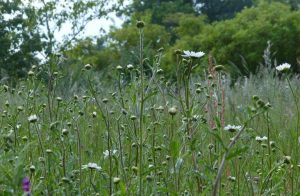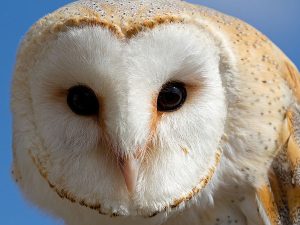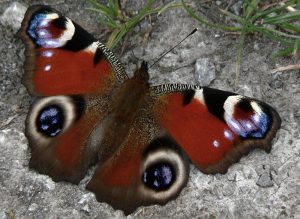Which are your favourite species of bee? For Nick Mann of Habitat Aid, ranking high among them is the Wool Carder bee. Here he lets us know why, and how it is that you can create a welcoming habitat for them in your own garden.
The Wool Carder bee, Anthidium manicatum, is one of my favourite bees.
To start with, just to clear up any confusion, they’re not a bumblebee. They’re no relation to nice fluffy Common Carder bees like this:

Yes, it’s confusing. Sorry about that.
Wool Carder bees are particularly good looking though. They’re one of our largest solitary – not bumble – bees, and have smart yellow spots down their side.
The males are bigger than the females, and have a comic belligerence. Like all male bees, wool carders are sting-less, but they charge around their little territory boshing any other insect with a set of spikes on their abdomen. After each frantic encounter they have a short rest, then whizz off looking for another intruder. I spent a half hour watching this chap, who paused between patrols to sun himself.

There is always likely to be someone to see off, as Wool Carders hang out around Stachys byzantina, or Stachys lantana – Lamb’s Ears. It’s a pretty plant from the Middle East, drought tolerant and easy to grow, and a good source of nectar for a number of other pollinators, not just other Wool Carder bees. That’s not principally why our friend values it so highly, though. The females scrape the soft furry hairs from the leaves to furnish their nests. Stachys lantana can give them what the native Great mullein or Yarrow also provide.

It’s this relationship between plant and animal which I really like. I bought three little Stachys lanata plants in pots a couple of years ago and planted them to see what would happen. It took a season, but last summer – from nowhere, apparently – Anthidium manicatum rocked up. They’re not particularly rare bees in the south, but I hadn’t seen any around the garden for 5 years previously. We now have six patches of Stachys, which spreads like topsy, and – guess what – Wool Carder bees in all of them.
It’s a small example of how we can make a measurable improvement to biodiversity by making an easy and apparently minor – but informed – change to our immediate surroundings. This is such a key message for us all, and it’s not just important but immensely empowering.
Main image by Melissa McMasters from Memphis, TN, United States / CC BY. Find the original post over on the Habitat Aid blog.
 About the author
About the author
Based in Somerset, Nick Mann started Habitat Aid in 2008 to promote and sell British native trees, hedging, aquatic plants, wildflower seed and heritage fruit trees sourced from a community of small specialist UK nurseries and growers. They also offer groundwork, planting and seeding as well as ecological services through their network of partners.

